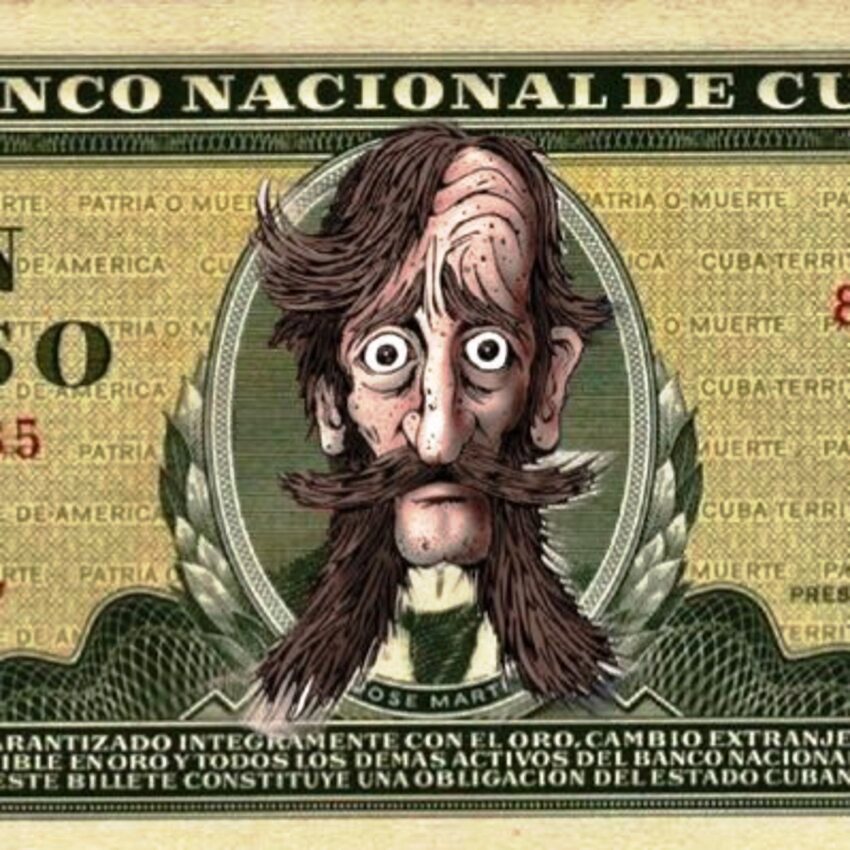
LIBORIO, EL “UNCLE SAM” CUBANO Y OTROS PERSONAJES HOY YA DESAPARECIDOS EN CUBA. PHOTOS.
LIBORIO, es un personaje del imaginario popular que representa al pueblo de Cuba, simbolizando todos los desafíos que ha enfrentado a lo largo de su historia, aunque algunos consideran que este es un personaje sumiso y llorón y que le daba mala fama a los cubanos. Con su guayabera de hilo, su sombrero de yarey, el pañuelo al cuello y el machete al cinto, es la estampa del campesino cubano, siempre dispuesto a desenvainar el machete, pero que no lo hace.
Pero con el tiempo, para representar verdaderamente al pueblo cubano, aparece con una camisa rota, pantalones desgarrados y descalzo.
Si hay una frase muy de moda en la sociedad cubana, o más bien en lo que queda de ella, es : “eso lo paga Liborio”. Así se decía durante la república cuando se denunciaba la corrupción o el robo de los fondos públicos por parte de algún político, que no fueron pocos, pero ahora hay que repetirlo a toda hora, todo lo paga Liborio, el pueblo, mientras una pequeña cúpula gobernante se enriquece.
Liborio se gana el cielo, del que no hay certeza de que exista o más bien hay certeza de que no existe, mientras que ha llevado una vida de trabajo, miseria y privaciones.
Se puede considerar que Liborio es poco optimista, infeliz, abandonado, ingenuo y que inspira lástima, siendo casi un despojo humano, y sin embargo es el símbolo nacional. Eso explica un poco el por qué se mantiene en el poder la dictadura castrista.
Al final Liborio representa el sufrimiento y el cansancio del pueblo ante los interminables discursos y mentiras de los políticos y que a pesar de que nunca saca el machete, todavía lo lleva a la cintura, aunque ya no sé para qué.
Hace más de tres décadas que el campo socialista desapareció sin tirar un tiro y sin embargo Cuba sigue montada en el tren que lo lleva hasta el precipicio, por lo que parece que el machete de Liborio está de más.
PERSONAJES CUBANOS DESAPARECIDOS
No son personajes reales, pero en el otro lado están los que realmente existieron y desaparecieron después del triunfo de la revolución de 1959, como son el hielero o nevero, el lechero, el peletero, el afilador, los despedidores de duelo en el cementerio, tamaleros, vendedores de ostiones, estiradores de bastidores, forrador de botones, heladeros, limpiabotas, mecanógrafos, costureras. Y los maniceros y tamaleros ya no son los de antes, que vendían su producto caliente.
Y han surgido otros personajes inverosímiles, como raspadores de calderos, rellenador de fosforeras, reparadores de paraguas y sombrillas, reparadores de espejuelos, reparadores de colchones y hasta han resurgido los zapateros remendones. Pero también aparecieron los detectives privados, cuidadores de mascotas, bici taxistas, mototaxistas, tramitadores de visas y pasajes, organizadores de fiestas con músicos o payasos incluidos, y oficios extintos hace mucho, como serenos y sobre todo pregoneros de cualquier cosa.


LIBORIO, THE CUBAN “UNCLE SAM” AND OTHER CHARACTERS NOW DISAPPEARED IN CUBA. PHOTOS.
LIBORIO, is a character from the popular imagination that represents the people of Cuba, symbolizing all the challenges it has faced throughout its history, although some consider that this is a submissive and crying character and that he gave Cubans a bad name. With his thread guayabera, his yarey hat, the scarf around his neck and the machete on his belt, he is the image of the Cuban peasant, always ready to unsheath the machete, but who does not do so.

But over time, to truly represent the Cuban people, he appears with a torn shirt, torn pants and bare feet.
If there is a very fashionable phrase in Cuban society, or rather in what remains of it, it is: “Liborio pays for that.” This is what was said during the republic when corruption or the theft of public funds by a politician was denounced, which was not a few, but now it must be repeated at all times, everything is paid for by Liborio, the people, while a small dome ruler becomes rich.
Liborio earns heaven, of which there is no certainty that it exists or rather there is certainty that it does not exist, while he has led a life of work, misery and deprivation.
It can be considered that Liborio is not very optimistic, unhappy, abandoned, naive and that he inspires pity, being almost a human wreck, and yet he is the national symbol. That explains a little why the Castro dictatorship remains in power.
In the end Liborio represents the suffering and fatigue of the people in the face of the endless speeches and lies of the politicians and that even though he never takes out the machete, he still carries it around his waist, although I no longer know why.
It has been more than three decades since the socialist camp disappeared without firing a shot and yet Cuba is still riding the train that is taking it to the precipice, so it seems that Liborio’s machete is unnecessary.
MISSING CUBAN CHARACTERS
They are not real characters, but on the other side are those who really existed and disappeared after the triumph of the 1959 revolution, such as the ice maker, the milkman, the furrier, the sharpener, the mourners in the cemetery, tamaleros, oyster sellers, frame pullers, button setters, ice cream makers, shoe shiners, typists, seamstresses. And the maniceros and tamaleros are no longer the ones they used to be, who sold their product hot.
And other unlikely characters have emerged, such as cauldron scrapers, matchbox fillers, umbrella and parasol repairers, eyeglass repairers, mattress repairers and even cobblers have resurfaced. But private detectives, pet sitters, bike taxi drivers, motorcycle taxi drivers, visa and ticket processors, party organizers with musicians or clowns included, and long-extinct trades also appeared, as watchmen and, above all, preachers of anything.


Agencies/ Wiki/ NostalgiaCubana/ Carlos Rodriguez Búa/ Extractos/ Excerpts/ Internet Photos/ Arnoldo Varona/ www.TheCubanHistory.com
THE CUBAN HISTORY, HOLLYWOOD.



